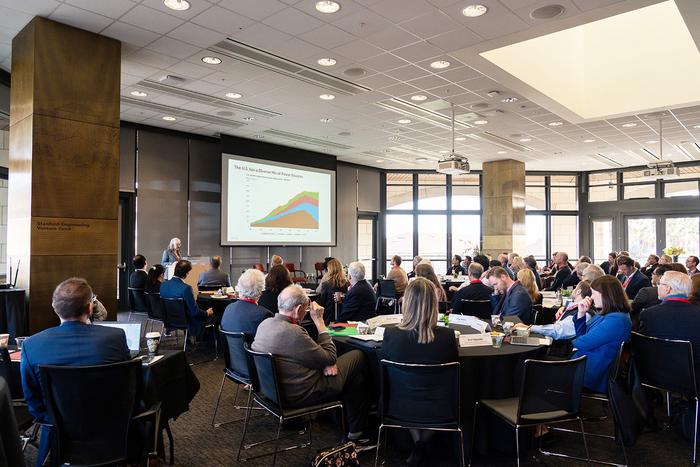
The U.S. electricity system is at a critical juncture, poised for transformative growth driven by various factors, necessitating urgent attention from policymakers. As the Department of Energy projects a significant increase in electricity demand—up to 20% over the next decade and potentially doubling by 2050—it is imperative that the nation reconcile this growing appetite with an outdated grid infrastructure. Experts convened at Stanford University not only identified the challenges but have also put forward innovative frameworks to reshape the future of American energy.
The backdrop to this rising demand includes the rapid expansion of artificial intelligence applications, electrification of transportation, and increased domestic manufacturing. While these advancements are essential for economic health and global competitiveness, they place unprecedented strain on the U.S. electrical grid, which requires immediate upgrades and expansion to maintain reliability and affordability. The limitations of the current grid, evident in sporadic outages and regional inefficiencies, highlight the critical need for developing a robust energy backbone capable of supporting emergent technology and growing population requirements.
Arun Majumdar, the dean of the Stanford Doerr School of Sustainability, emphasized the urgency at which stakeholders must act to secure the future of American energy. His remarks, echoed throughout the meeting, reflect a consensus among energy experts that the U.S. must navigate this pivotal period with collaborative and actionable plans. Notable participants, including former Secretary of State Condoleezza Rice and former Secretary of Energy Jennifer Granholm, contributed their insights, emphasizing bipartisan strategies as the linchpin of any successful energy policy reform.
Among the salient recommendations from the convened experts are six foundational strategies aimed at navigating the existing challenges. While these are not exhaustive solutions, they synthesize discussions that underscore a united approach to grappling with energy issues. The first suggestion revolves around enhancing national security, as the increasing reliance on electrical systems makes them susceptible to cyber threats. By fostering international cooperation and securing supply chains, the nation can mitigate risks and bolster grid resilience against physical and cyber attacks.
The second idea presented advocates for a comprehensive energy strategy that encompasses a variety of energy sources without exclusion. By adopting an “all-of-the-above” mindset, integrating renewables, nuclear, and natural gas will allow for cost control while ensuring grid stability. Policymakers are encouraged to pursue market-driven approaches that include innovative technologies and practices aimed at a sustainable energy portfolio. This diversification approach not only aligns with environmental goals but also aims to create a more robust framework capable of adapting to evolving energy landscapes.
Thirdly, the establishment of a federal and state grid investment fund stands out as a transformative initiative. The fragmented nature of the U.S. electricity system, segmented into six regional grids, limits the capacity to shift power efficiently across geographic boundaries. By developing a national transmission network, the electrical grid can better accommodate intermittent renewable energy sources like wind and solar. Moreover, policymakers can explore opportunities for public backing to facilitate financing large-scale transmission projects that promise to optimize energy flow and reduce operational costs.
Streamlining permitting processes also emerged as a necessary measure for expediting new transmission developments. Current timelines for project approvals can span years, obstructing the rapid development essential for modernizing the grid infrastructure. By prioritizing innovative projects and leveraging technologies such as artificial intelligence for enhanced efficiency, energy projects can overcome bureaucratic delays without compromising environmental standards.
Flexibility in grid policies was another central theme, which aims to foster real-time adjustments to accommodate new energy sources. The current requirements around infrastructure assessments can delay project initiation, thereby hindering progress. Encouraging a “connect and manage” paradigm will facilitate better integration of distributed energy resources, ultimately curtailing the time to market for renewable projects and ensuring a faster response to energy demands.
Lastly, modernizing utility operations represents a foundational shift required for addressing 21st-century electricity challenges. Incentives should be realigned to favor performance-based rates rather than solely capital-intensive projects. By creating mechanisms that reward efficiency and sustainability, utilities can become active participants in the energy evolution rather than passive administrators of older, outdated models. This strategic pivot is essential for fostering innovation and resilience, particularly as the grid braces for harsher weather patterns and increased demand.
Collaboration across governmental and private sectors will be essential for realizing these strategies effectively. The message is clear: strengthening America’s energy infrastructure cannot be a politically divisive issue, as the stability of the grid is fundamental to economic prosperity and national security. Therefore, addressing these gaps should transcend the traditional boundaries of political affiliations, calling for collective action from all relevant stakeholders, including governmental entities, utility providers, financial institutions, and technology innovators.
In conclusion, the challenges facing the U.S. electricity grid offer both threats and opportunities. The recommendations outlined by the Stanford gathering of experts provide a crucial roadmap for evolving a grid that can manage today’s demands while preparing for future requirements. Embracing a multi-faceted, inclusive approach will not only safeguard America’s energy reliability but also enhance its competitive edge in an increasingly electric world. The call for action is now, as meeting the demands of the 21st century is not merely an option—it has unequivocally become an imperative.
Subject of Research: Not applicable
Article Title: Meeting 21st Century U.S. Electricity Demand
News Publication Date: 3-Apr-2025
Web References: Not applicable
References: Not applicable
Image Credits: Erik Zarazua/Precourt Institute for Energy
Keywords
Electric vehicles, Artificial intelligence, Power industry
Tags: challenges facing the U.S. electrical griddomestic manufacturing and energy needselectricity crisis prevention strategieselectrification of transportation initiativesfuture of American energy systemsimpact of artificial intelligence on energyincreasing electricity demand projectionsinnovative energy frameworksregional inefficiencies in energy distributionreliability and affordability of electricityU.S. energy infrastructure upgradesurgent action for energy sustainability





